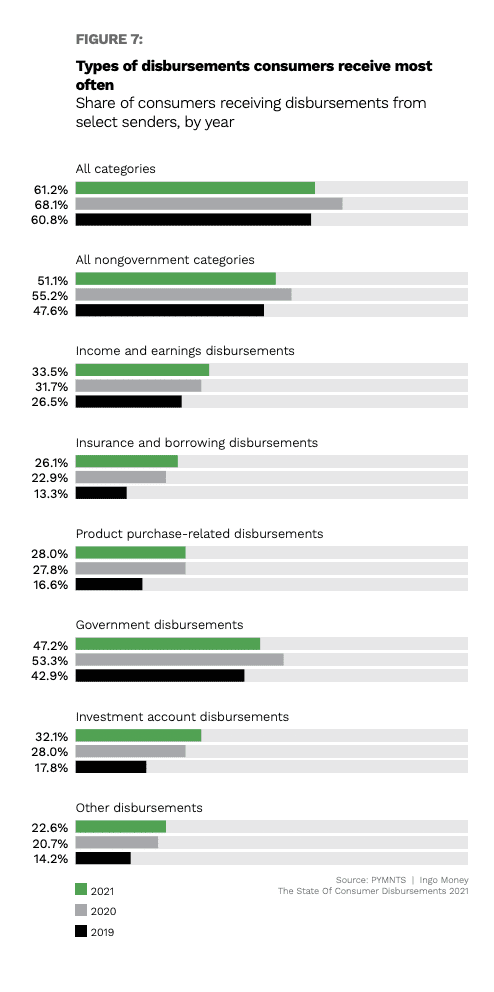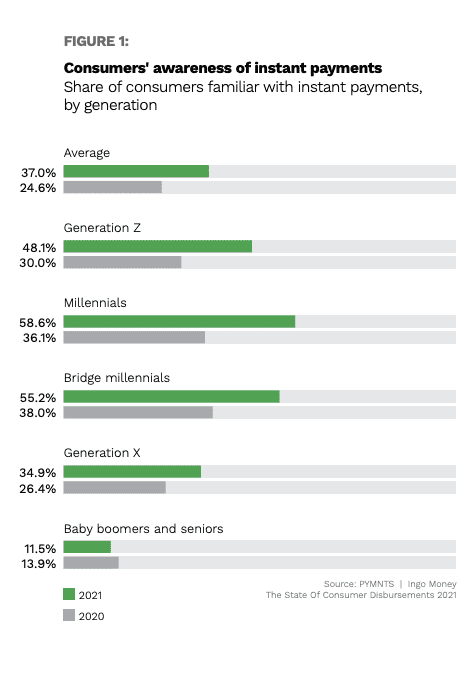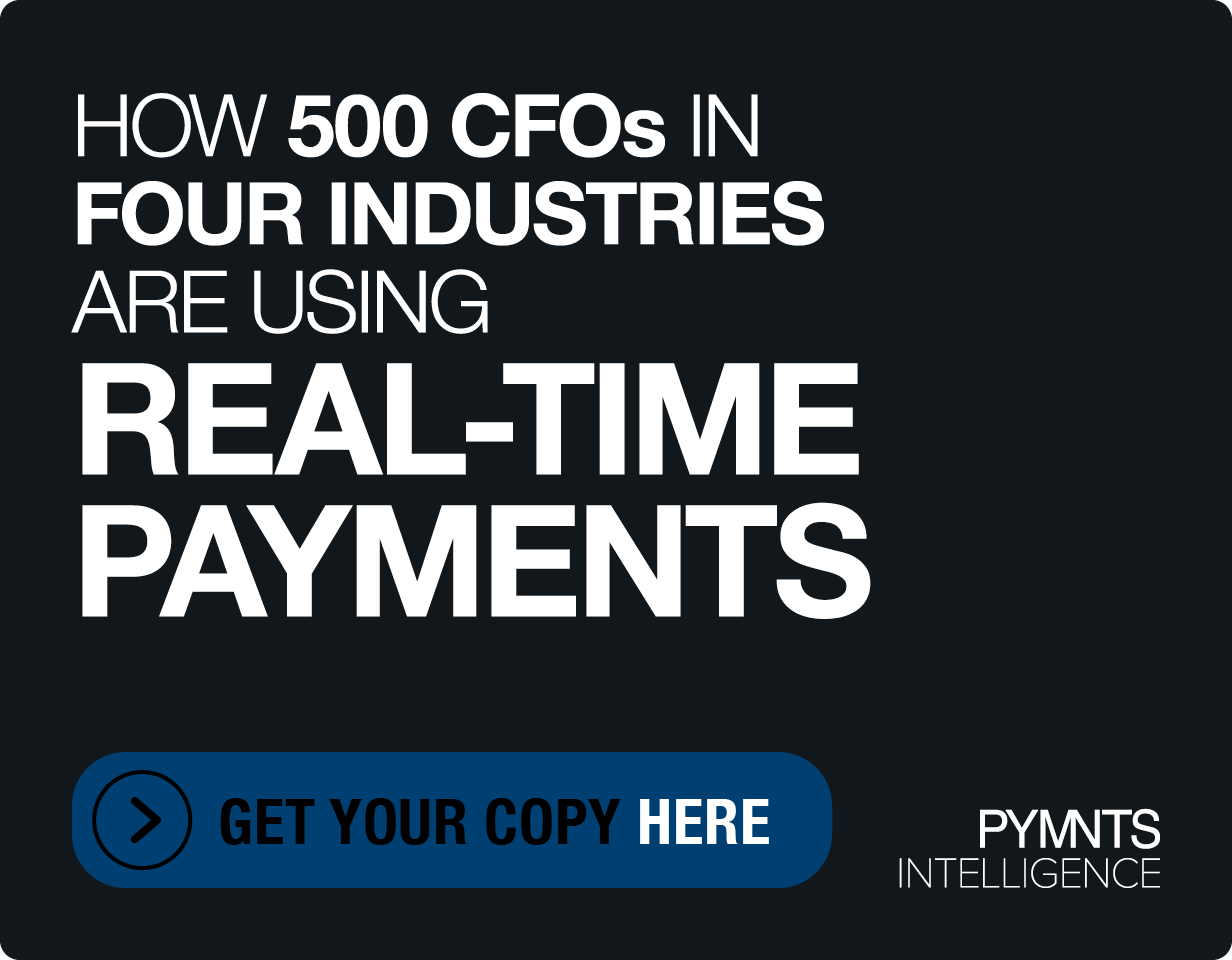33% of Consumers Willing to Pay to Receive Instant Payouts

Necessity, as they say, is the mother of invention.
In the throes of the pandemic, and in the midst of economic upheaval and the need to cast social safety nets wide and far, disbursements made the leap – and are still making the leap – from paper-based payouts to digital conduits.
Most consumers are no doubt familiar with any number of government payouts that have landed trillions of dollars into the hands of individuals and families navigating the pandemic over the past 18 months. Stimulus payments, as noted in the recent report “The State of Consumer Disbursements: Who Pays Consumers, and How Quickly,” helped set the stage for the increasing adoption of disbursements in everyday life – especially when done as instant payments, joint research from PYMNTS/Ingo Money found.
Also see: The State of Consumer Disbursements: Who Pays Consumers — and How Quickly
To get a sense of just how deeply entrenched disbursements have become, in the initial months of lockdown and into July of last year, the U.S. government disbursed stimulus payments to 138 million consumers, spanning 171 million transactions, with a total value of more than $400 billion. The payments themselves have been on the wane as vaccinations have taken hold and economies have reopened. But the government-led efforts have cemented a familiarity with instant payouts, leading consumers to demand that payment functionality from the merchants and other enterprises with which they do business on a daily basis.
To that end, consumers received roughly three times as many as disbursements via instant payment in the year to date. That equates to 17% receiving at least one disbursement in the past year, which translates into 27 million individuals. Income and earnings disbursements still top the list of types of disbursements, followed by insurance and borrowing.
 Drilling down a bit into the demographics, it becomes apparent that almost all “subsegments” of the population are increasingly aware of instant payments. Familiarity has increased into 2021, from about 25% of the population to a recent 37%. The only segment to see a decline was the Boomer generation – while more than half of Generation Z, millennials and bridge millennials are familiar/aware of the payment option.
Drilling down a bit into the demographics, it becomes apparent that almost all “subsegments” of the population are increasingly aware of instant payments. Familiarity has increased into 2021, from about 25% of the population to a recent 37%. The only segment to see a decline was the Boomer generation – while more than half of Generation Z, millennials and bridge millennials are familiar/aware of the payment option.
 Awareness of instant payments, and the experience that has come with actually having received them, has led to a willingness to pay a premium for the services. About 46% of disbursement recipients would be inclined to choose instant payments if they were available, and 66% would be more likely to continue doing business with firms that provided free instant payment options.
Awareness of instant payments, and the experience that has come with actually having received them, has led to a willingness to pay a premium for the services. About 46% of disbursement recipients would be inclined to choose instant payments if they were available, and 66% would be more likely to continue doing business with firms that provided free instant payment options.
Roughly a third of consumers say they would pay “extra” to receive instant disbursements. Fifty-one percent of disbursement recipients say they would pay such a fee to receive insurance payments instantly, and 49% would pay a fee to receive instant income and earnings disbursements.
The awareness and growing embrace of instant disbursements is eating a bit into same-day ACH, which remains the most common method of disbursements overall, but there were 26% fewer disbursements across this method in 2021 than in 2020. PYMNTS/Ingo data show that instant payments might overtake same-day ACH as early as 2022.
